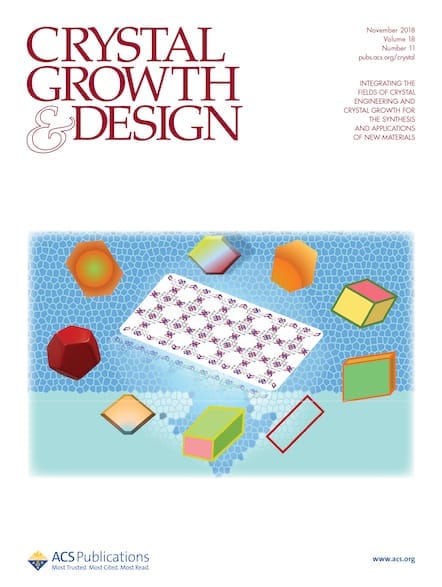Crystal Growth & Design Author Features highlight authors from the journal by topic area. Each featured author has published at least five articles in the journal over the past five years. This quarter, we met with researchers focused on inorganic and coordination chemistry. Read interview highlights from this month’s featured authors: Stay tuned for the […]

I am a Chair Professor at the State Key Laboratory of Crystal Materials, Shandong University. I received my B.S. and M.S. in chemistry and condensed physics in 1983 and 1986, respectively, from Shandong University under the supervision of Professor Minhua Jiang. In 1995, I went on to receive my Ph.D. in functional materials from the Tokyo University of Agriculture & Technology, Japan, under the supervision of Professor Seizo Miyata. My research interests include crystal growth, laser, and nonlinear optical crystal materials, and organic and organic-inorganic hybrid photonic materials.
Why do you choose to publish your work in Crystal Growth & Design?
What initially attracted you to your field?
I wanted to know why “growth” was used for crystals, but “preparation” was used for other materials.
What is the most important unsolved problem in your field?
The most important unsolved question in the field is, ‘how can we get crystals with expected properties?’.
What is your favorite thing about your job?
My favorite thing about my job is working with a lot of new crystals with different compositions, structures, and properties that my lab has grown.
What is the best advice you’ve ever been given?
The weakness of crystals is their fragility, and growing crystals requires extra care.
[/expand] Profesor Tori Z. Forbes, University of Iowa
Tell me about yourself.
I grew up on a farm in rural Nebraska and I’m a first-generation college student. I received my B.S. in Chemistry from Beloit College, Wisc., and then worked as a research technician at the Woods Hole Oceanographic Institute in Woods Hole, Mass. for two years. I obtained my Ph.D. at the University of Notre Dame and then served as a postdoctoral scholar at the University of California, Davis. I am currently an associate professor at the University of Iowa where my group explores structure-function relationships in a wide range of crystalline materials.
Why do you choose to publish your work in Crystal Growth & Design?
What initially attracted you to your field?
I’ve always been fascinated with how the properties of materials start with how the atoms are arranged within a crystalline lattice and precisely controlling these atoms will enable us to precisely control their properties. This aspect combined with the creativity that is needed to develop new materials keeps me excited about my work every day.
What is the most important unsolved problem in your field?
Developing a mechanistic approach to materials design and related properties. If you look at organic chemists, they have been able to utilize NMR spectroscopy and other techniques to develop retrosynthetic pathways. We need to develop more tools to probe mechanisms with inorganic elements and develop energy landscapes to understand nucleation and growth pathways at the atomistic level.
What is your favorite thing about your job?
My favorite part is mentoring graduate and undergraduate students. I love watching them grow during their time in my lab and seeing them develop into confident and independent chemists.
What is the best advice you’ve ever been given?
I was worried about starting a tenure-track faculty position at an R01 institution and my postdoctoral advisor, Alex Navrotsky, told me “Do good science and the rest will come.” As usual, she was right!
[/expand] Dr. Katsuya Teshima, Shinshu University
Tell me about yourself.
I am a Distinguished Professor at my alma mater, Shinshu University, where I received both my B.S. and M.S. in Materials Chemistry in 1995 and 1997, respectively. In 2003, I took a short break from Shinshu University to obtain my Ph.D. in Materials Chemistry and Engineering at Nagoya University. Now back at Shinshu University, my lab focuses on crystal growth and materials design, especially the synthesis of various functional materials by flux and flux-coating method.
Why do you choose to publish your work in Crystal Growth & Design?
What initially attracted you to your field?
I became fascinated with the beautiful atomic arrangement of a single crystal and watching it develop a characteristic crystals facet. The flux method has the potential to freely control both elements, which would allow us to create new devices. I am interested in seeing how the field evolves and how this work progresses, with the wisdom of researchers.
What is the most important unsolved problem in your field?
The most important unsolved problem in the field is systematizing the theories of flux crystal science. Currently, many researchers rely on their past experience and intuition.
What is your favorite thing about your job?
My favorite part of my job is growing a beautiful, single crystal with my research group using our flux method. It makes me forget about any hardship.
What is the best advice you’ve ever been given?
Even in failure, there is a lesson to be learned.
[/expand]
